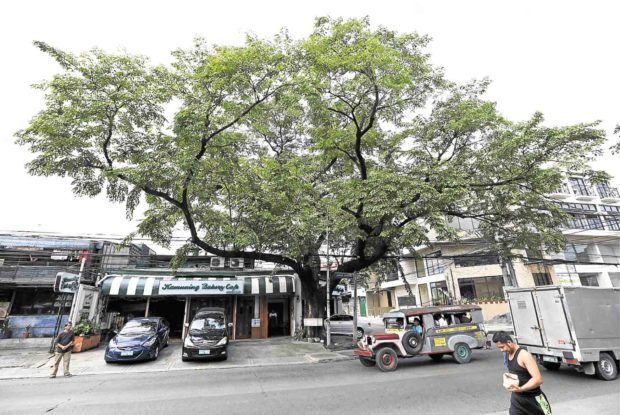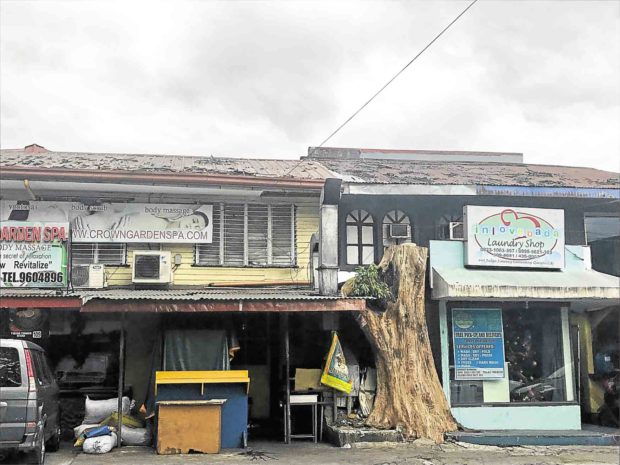
This narra tree on Judge Jimenez Street in Kamuning, Quezon City, may soon be included on the list of protected trees under a local ordinance approved last month.—PHOTO BY NIÑO JESUS ORBETA
For Eugenio Roy Daza and other longtime residents of Barangay Kamuning, Quezon City, fond memories of youth included playful afternoons climbing sampaloc and santol trees, munching on the fruit and later dozing off in the shade.
As years went by, however, the green patches of their neighborhood gave way to the gray urban sprawl, the trees disappearing one by one to make space for more homes and other developments.
Last year, Daza launched a one-man mission to save a 70-year-old narra tree on Judge Jimenez Street.
Officials said the tree was dying, anyway, but he persisted and even put up a poster on the trunk to make an appeal addressed to City Hall and the environment department.
Just last month, the campaign came to an end for Daza, a history buff who was born in the same year the narra tree was planted.

But the same could no longer be said of another narra tree on the same street, as it was cut down recently despite an appeal made by a resident. All that is left is a stump and the resident’s souvenir photo (below) of the once-healthy tree.—PHOTOS BY JHESSET O. ENANO
Lost cause
“I wasn’t there when it was chopped down,” he told the Inquirer on Saturday. “But maybe it was better that way because, after fighting for a lost cause, I would probably get too emotional and even confrontational in that situation.”
But Daza may soon find new allies in guarding the greens in Metro Manila’s biggest city, after the local government approved a measure calling for the documentation and care of the oldest trees standing.
Signed by Mayor Herbert Bautista on Nov. 28, Ordinance No. SP-2638 or the “Century and Heritage Tree Ordinance” seeks to preserve trees that have survived for decades, by having them marked and protected against damage, natural or manmade.
Aside from century-old trees, those that are younger but are considered “ecologically, historically or culturally valuable” because they are of a rare species or located near water sources are also covered. The ordinance calls them “Heritage Trees.”
Persons found to have injured trees protected by the ordinance face a fine of P5,000 or jail time of up to six months.
A technical committee will be formed to locate and mark the trees that will be accorded such special attention. Each tree will be assigned a registry number and a metal marker indicating its scientific name, approximate age, and the date it was placed under government protection.
The marker will also read: “All citizens are enjoined to protect and preserve this tree as part of our natural treasure and patrimony.”
“Century trees have historical roots and can be effective symbols for taking care of our environment,” according to the measure authored by Councilors Gian Carlo Sotto and Elizabeth Delarmente.
Exceptions
“All trees declared as Century or Heritage Trees shall not be subjected to any cutting or any form of destruction, except (in cases of) public emergency (or for) safety, medical or botanical reasons,” the ordinance read.
The measure was approved just five days after Daza’s precious narra tree in Kamuning was felled.
“We really need to have community awareness,” said Daza, who was able to take a photo of the tree before it was cut down. “If not for affirmative action, we still forget about our city trees. They will remain helpless amid development.”
He recalled that the narra tree started to wilt and die within a year after an open-grill kitchen was allowed to be built next to it, “choking” its trunk and engulfing the leaves and branches in smoke.
Before coming under such threat, the narra tree withstood storms and earthquakes. It showered the street with gold as it bloomed in summertime.
Today, a stump is all that remains. “I hope this will be a lesson for all of us,” Daza said.

